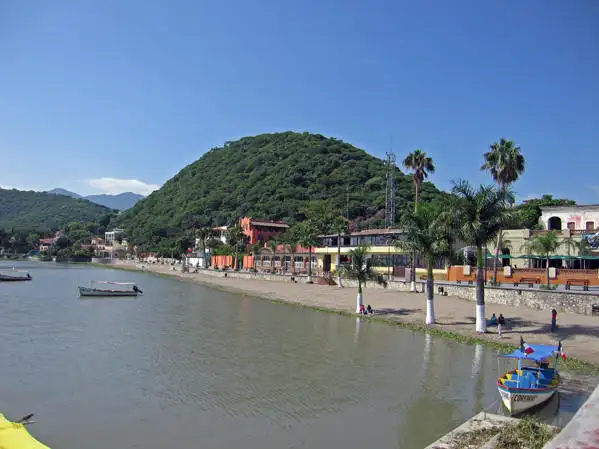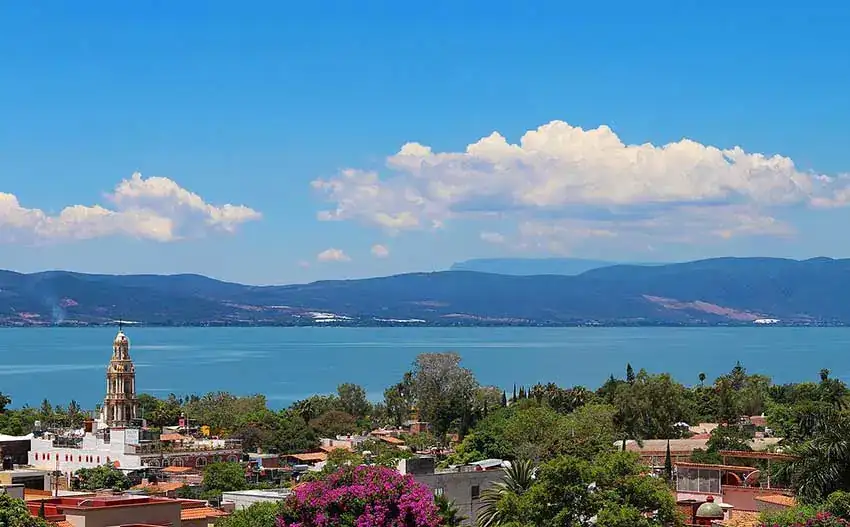Why Does Lake Chapala Smell: Lake Chapala, Mexico’s largest freshwater lake, is known for its scenic beauty and as a popular destination for both tourists and expatriates. However, residents and visitors have often noticed an unpleasant smell emanating from the lake. This article delves into the reasons behind this odor, exploring the environmental, ecological, and human factors contributing to the smell. We’ll also look at the efforts being made to address these issues and what can be done to help improve the situation.

Understanding Lake Chapala
Lake Chapala is situated in the central part of Mexico, primarily in the state of Jalisco. It serves as a crucial water source for the region and is integral to local ecosystems. The lake is renowned for its picturesque views, its importance to local wildlife, and its role in supporting nearby communities.
The Sources of Odor in Lake Chapala
Several factors contribute to the smell of Lake Chapala. Understanding these sources is crucial for addressing the issue effectively.
Nutrient Pollution
One of the primary reasons for the smell is nutrient pollution, particularly from agricultural runoff. Farmers in the region use fertilizers and pesticides that eventually wash into the lake. These nutrients, especially nitrogen and phosphorus, promote the growth of algae. When algae die and decompose, they release compounds that produce unpleasant odors. This process is known as eutrophication.
Algal Blooms
Algal blooms are a direct result of nutrient pollution. When conditions are right, such as during warm weather, algae can proliferate rapidly. Some types of algae produce toxins or odorous compounds as they decay. The decomposition of these algae contributes significantly to the foul smell.
Wastewater and Sewage
Improperly managed wastewater and sewage are major contributors to the lake’s odor. In many areas around Lake Chapala, outdated or inadequate sewage systems mean that raw sewage or partially treated wastewater ends up in the lake. This not only causes an unpleasant smell but also poses health risks.
Organic Matter Decomposition
Lake Chapala, like many bodies of water, has a natural process of organic matter decomposition. Leaves, plant material, and other organic debris that fall into the lake eventually break down. During this decomposition process, anaerobic bacteria (bacteria that thrive in low-oxygen environments) produce gases such as methane and hydrogen sulfide, which can have a strong, unpleasant odor.

Environmental Impact
The smell of Lake Chapala is not just a nuisance but also has broader environmental implications: Impact on Wildlife
The excess nutrients and resulting algal blooms can create hypoxic (low oxygen) conditions in the water, which can be harmful or even lethal to fish and other aquatic organisms. This disrupts local ecosystems and can lead to a decline in biodiversity.
Water Quality
The presence of high levels of nutrients and organic matter affects the water quality of Lake Chapala. Poor water quality can impact the health of the communities that rely on the lake for drinking water, irrigation, and recreation.
Economic Effects
The unpleasant smell and poor water quality can affect local economies. Tourism, which is a significant source of income for the region, may decline if visitors are deterred by the lake’s condition. Additionally, fishing and other lake-related activities can suffer, impacting local livelihoods.
Efforts to Address the Issue
Addressing the odor of Lake Chapala requires a multifaceted approach involving environmental management, community engagement, and government intervention. Here are some of the key efforts and strategies being implemented:
Improving Wastewater Management
Upgrading sewage and wastewater treatment facilities is crucial. Projects are underway to improve sewage infrastructure around the lake to ensure that wastewater is properly treated before it enters the lake. This helps reduce the load of pollutants and minimizes the impact on water quality.
Controlling Agricultural Runoff
Efforts are being made to reduce nutrient runoff from agricultural activities. This includes promoting sustainable farming practices, such as reducing the use of chemical fertilizers and implementing erosion control measures to prevent soil and nutrients from washing into the lake.
Monitoring and Research
Ongoing monitoring and research are essential for understanding the dynamics of the lake’s water quality and odor issues. Scientific studies help identify the sources of pollution, track changes in water quality, and assess the effectiveness of management strategies.
Community Involvement
Local communities play a vital role in addressing the lake’s problems. Education and awareness campaigns are crucial for encouraging residents to adopt practices that reduce pollution. Community clean-up efforts and involvement in local decision-making can also contribute to improving the lake’s condition.
Also read Why Do Checkout Computers Talk To You in Japan
How You Can Help
As an individual, there are several ways you can contribute to the health of Lake Chapala:
- Support Local Initiatives: Participate in or donate to local environmental groups working to protect and restore Lake Chapala.
- Reduce Pollution: Be mindful of how you dispose of waste and avoid using harmful chemicals that could end up in the lake.
- Educate Others: Spread awareness about the importance of protecting Lake Chapala and encourage others to take action.
- Visit Responsibly: If you visit Lake Chapala, follow local guidelines to minimize your impact on the environment.

Future Prospects
Addressing the odor of Lake Chapala is an ongoing challenge, but there is hope for improvement. With continued efforts in pollution control, infrastructure development, and community engagement, it is possible to restore the lake’s health and mitigate the unpleasant smell.
Innovative technologies and increased collaboration between governmental, environmental, and local organizations are key to achieving long-term improvements. Additionally, raising awareness and fostering a culture of environmental stewardship will contribute to the lake’s restoration.
Conclusion
The smell of Lake Chapala is a complex issue rooted in nutrient pollution, algal blooms, wastewater management, and organic matter decomposition. While this issue presents significant challenges, concerted efforts are being made to address the problem through improved waste management, agricultural practices, and community involvement.
For those interested in learning more about Lake Chapala and ongoing efforts to address its environmental issues, consider exploring the following resources:
Understanding and addressing the factors contributing to the smell of Lake Chapala is crucial for protecting this vital resource and ensuring its continued health and beauty for future generations. By supporting local initiatives and making environmentally conscious choices, we can all contribute to improving the condition of Lake Chapala.





